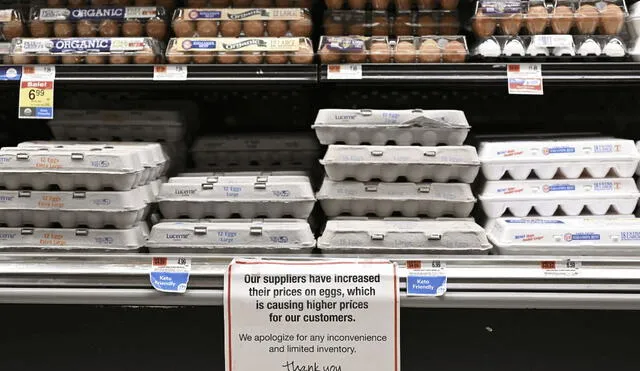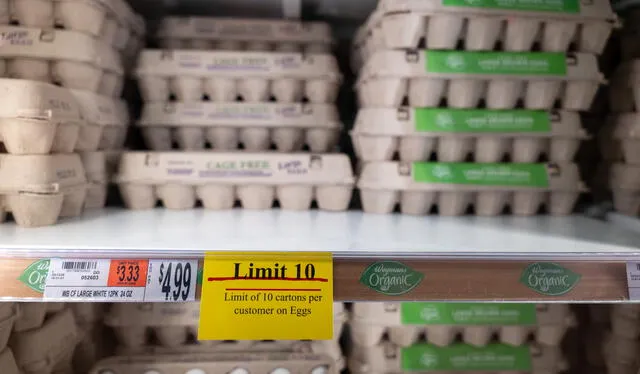USDA warns egg prices could soar 41% in 2025 amid Trump’s new Bird Flu Plan
Egg prices in the U.S. could surge by over 40% in 2025 due to ongoing bird flu outbreaks, according to the USDA. Learn about the Trump administration's new plan to combat avian flu, support farmers, and stabilize the market.

Egg prices across the U.S. are expected to rise sharply in 2025, with the USDA predicting an unprecedented 41% increase. The ongoing avian flu outbreak has led to the culling of millions of birds, causing supply shortages and price spikes at grocery stores.
In response, the Trump administration has announced a new plan aimed at mitigating the crisis, focusing on stricter biosecurity measures, financial aid for farmers, and potential vaccine development.
Why are egg prices rising?
The primary reason for the skyrocketing egg prices is the large-scale culling of poultry due to bird flu outbreaks. Since the virus reemerged in 2022, over 166 million birds have been slaughtered to curb its spread—most of them being egg-laying hens. The latest USDA data reveals that since the beginning of 2025 alone, over 30 million egg-laying chickens have been eliminated, causing a drastic reduction in supply.
As a result, egg prices have hit an all-time high, with some consumers paying over $12 per dozen in certain regions. The increase has significantly impacted households and restaurants, with popular chains like Denny’s and Waffle House adding surcharges to egg-based dishes.
Trump Administration's $1 billion plan to combat bird flu
To address the crisis, Agriculture Secretary Brooke Rollins announced that the U.S. Department of Agriculture (USDA) will allocate an additional $1 billion to fight avian flu, on top of the $2 billion already spent since 2022. The plan includes:

U.S. Department of Agriculture (USDA) will allocate an additional $1 billion to fight avian flu. Photo: USA Today
- $500 million to enhance biosecurity measures on farms.
- $400 million in direct financial aid for farmers whose flocks have been impacted.
- $100 million for research and development of potential poultry vaccines and treatments.
- Plans to review and potentially roll back strict animal welfare laws, such as California’s cage-free requirements.
Rollins emphasized that preventing the spread of the virus is the top priority and noted that improving farm safety protocols could significantly reduce future outbreaks.
How farmers are adapting to the crisis
Poultry farmers have been implementing stricter biosecurity measures since the 2015 bird flu outbreak, including:
- Requiring farmworkers to change clothes and shower before entering poultry barns.
- Using separate tools for different sections of farms.
- Disinfecting vehicles that come onto farm property.
Despite these measures, the virus continues to spread, primarily through wild birds. The USDA is currently conducting biosecurity reviews and offering financial support to help farms strengthen their defenses against outbreaks.

ALSO SEE: Elon Musk faces backlash over failed attempt to discredit former CNN Legal Analyst Norm Eisen
When will consumers see relief?
While the USDA’s plan aims to bring stability to the market, experts warn that prices may remain high for months. Rollins acknowledged that it takes time for farms to recover after an outbreak, as they must safely dispose of infected birds, sanitize facilities, and raise new flocks.
“It’s going to take a while to get through,” Rollins said, suggesting that consumers might see some relief by summer 2025.
However, analysts like Brian Earnest from CoBank remain skeptical about the immediate impact of these measures, stating that the new plan does not introduce significant changes from previous strategies.
Are egg imports a solution?
To alleviate the domestic shortage, the Trump administration is negotiating deals to import 70–100 million eggs from international suppliers. However, with U.S. farms producing over 7.5 billion eggs per month, these imports are unlikely to make a major difference in overall supply or pricing.
Could vaccines help curb the bird Flu Outbreak?
One potential long-term solution is the development of bird flu vaccines. The administration is investing $100 million into researching vaccines that could help reduce the need for mass culling. However, challenges remain:
- Current vaccine prototypes require individual injections for each bird, making large-scale immunization difficult.
- Vaccinated birds may face export restrictions, as some countries prohibit the import of vaccinated poultry due to potential detection complications.













